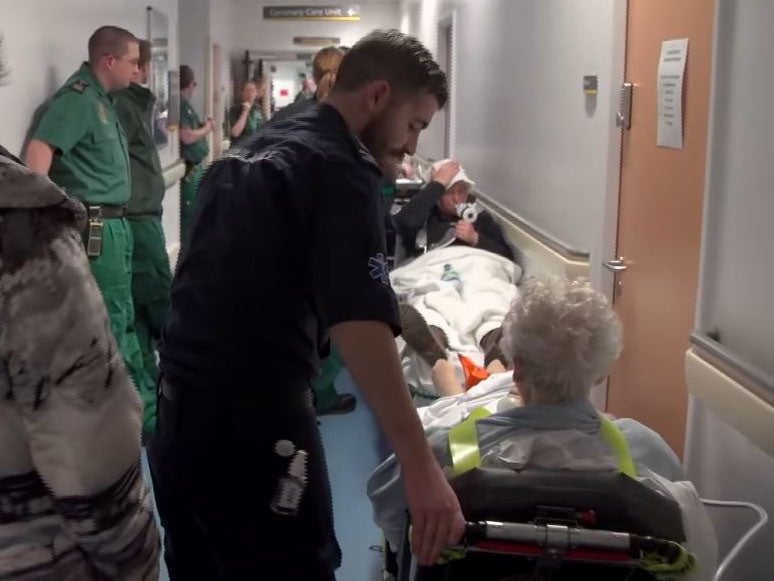Patients left bleeding and waiting hours in A&E corridor
Midwives ‘exhausted to the point of tears’ at Essex hospital, the Care Quality Commission finds

A patient was left bleeding in a corridor and another was left for hours after collapsing at a hospital in Essex, the care watchdog has warned.
Serious concerns over maternity staffing levels at the Princess Alexandra Hospital NHS Trust were also raised by the Care Quality Commission after midwives reported being “exhausted to the point of tears”.
The hospital has been told it must report weekly staffing levels within its emergency department to the CQC going forward, and must assess patients when they arrive at A&E.
The requirements come as part of warnings levied by the CQC to the trust over its concerns about safety, after it inspected the trust in July. The hospital received formal warning in February.
The news comes amid increased fears over emergency service pressures in the coming months, as health service leaders warned on Tuesday that the NHS is facing the worst winter in history.
According to a report published Wednesday, patients needing urgent assessments in A&E were left waiting for long periods – in some cases up to eight hours. This is despite inspectors from the care watchdog escalating concerns to staff.
It also found patients were being left in the hospital’s corridor after being brought in by ambulances. In one example, a patient who had been brought to hospital after being found collapsed and unresponsive, was not seen for two and a half hours, despite the CQC’s inspectors alerting hospital staff.
In another incident, a patient who was actively bleeding from the head was left in the corridor for 45 minutes with no assessment.
The CQC found the trust had no system in place to identify and prioritise the most critically ill patients attending its emergency department. Instead, patients were seen in the order they arrived.
Patients were sometimes sent from the emergency department to another area of the hospital, called a clinical decision unit, and left for more than 24 hours.
Maternity staff working on wards told commissioners they were “exhausted to the point of tears” as staffing shortages meant they were not getting breaks. They told the CQC senior staff had not listened to them when concerns were raised.
Staff in maternity were also found to be reporting safety incidents incorrectly. In six examples, where women had suffered “massive haemorrhaging”, staff only recorded the incidents as low harm.
Delays in care across the department were being driven by staff shortages and bed shortages, the CQC said. The department was also warned that it did not have a process to identify women who might be at risk during labour.
Assessment and treatment of mental health patients in the emergency department was previously identified as a concern in February, and the CQC have said the trust had failed to improve on this.
Subscribe to Independent Premium to bookmark this article
Want to bookmark your favourite articles and stories to read or reference later? Start your Independent Premium subscription today.

Join our commenting forum
Join thought-provoking conversations, follow other Independent readers and see their replies